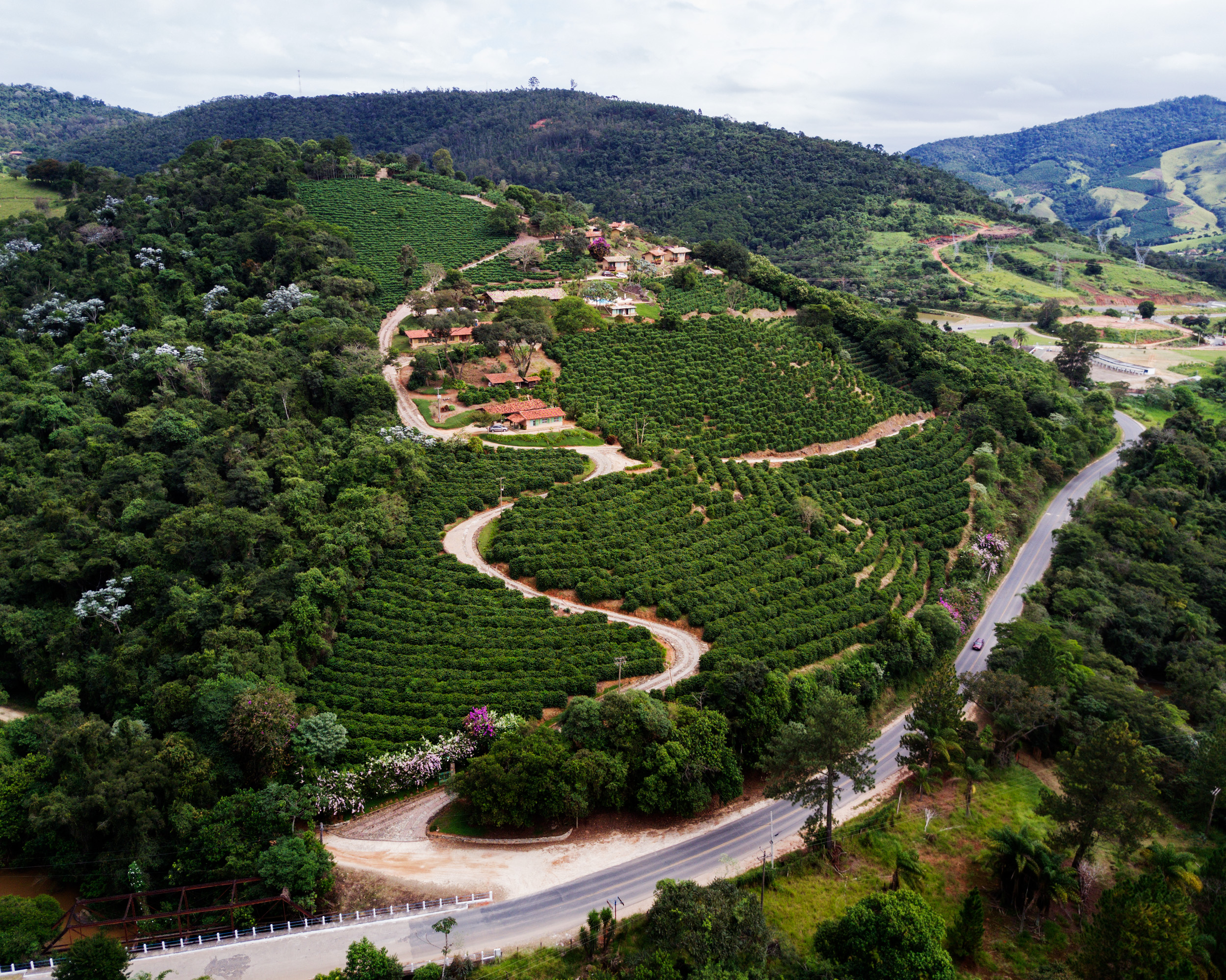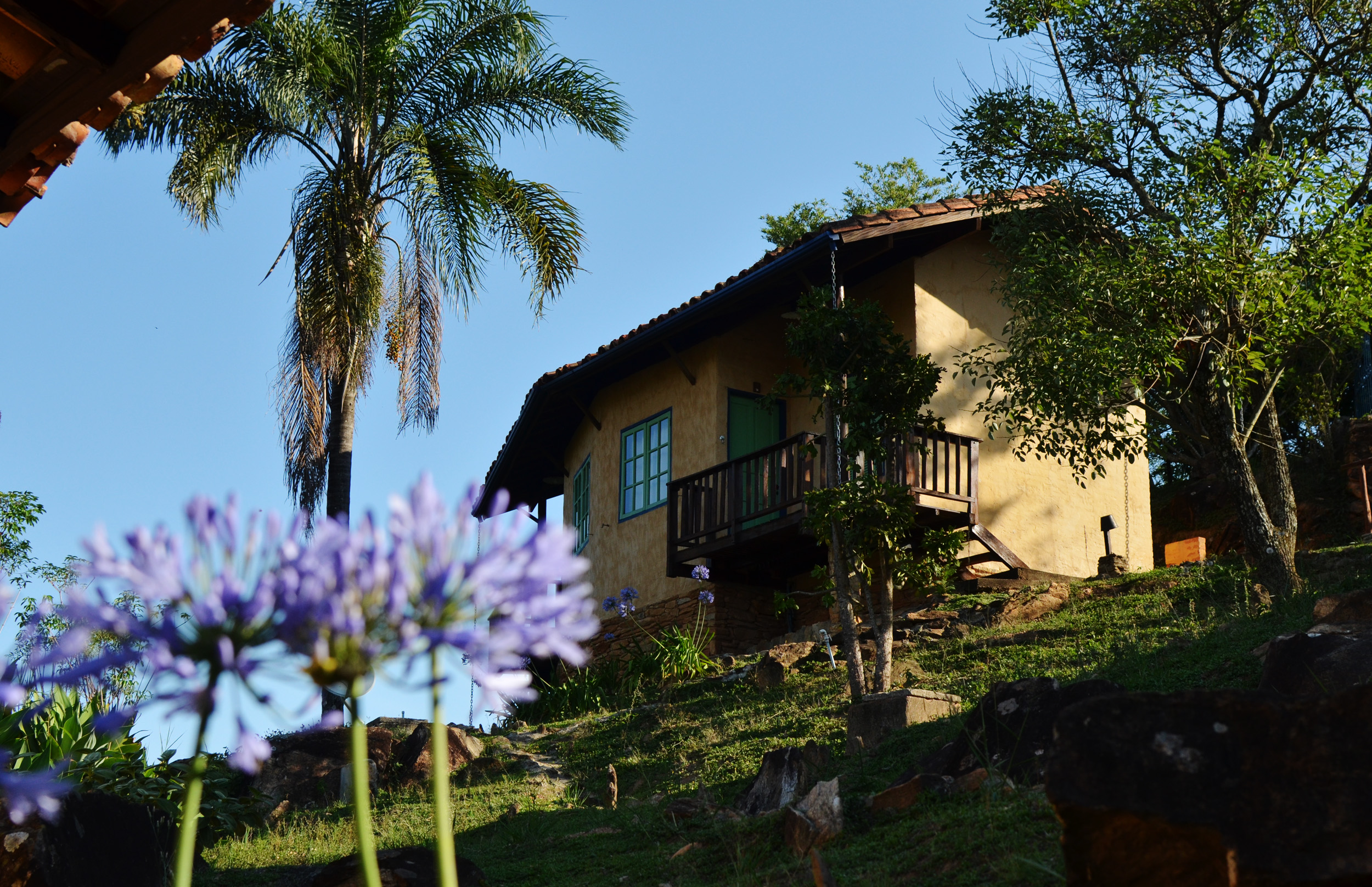On Brazil’s smallest farms, harvesting and processing may operate quite differently from the ‘typical’ procedures described in the previous two lessons. Small farms — those less than 10 hectares in size — produce nearly 60% of Brazil’s arabica coffee. Such farms often can’t afford expensive equipment such as mechanical harvesters or sophisticated processing machinery. Instead, they rely on traditional methods, picking and processing by hand, in order to maximise the value of their coffee. Meanwhile, other producers embrace technology and innovation to get the best results with limited resources. In the next two lessons, we speak to the owners of two small farms in Brazil to learn about how they operate.
 Cafezal em Flor, a small coffee farm in Monte Alegre do Sul
Cafezal em Flor, a small coffee farm in Monte Alegre do Sul
Cafezal em Flor is a family farm near the town of Monte Alegre do Sul in São Paulo. The farm is small by Brazilian standards, with 20,000 trees, mainly Red Tupi, Red Obatã, and yellow varieties of Catucaí, Catuaí, and Bourbon. The owners, Tuffi and Marcia Bichara, have developed a sustainable business by focusing on specialty coffee production and diversifying into agrotourism: They have built an inn and several guesthouses on the farm, and they offer guided tours, tastings, and hands-on experiences to visitors.
 Diversifying into agrotourism has helped Cafezal em Flor build a sustainable business focused on specialty coffee production
Diversifying into agrotourism has helped Cafezal em Flor build a sustainable business focused on specialty coffee production
In common with larger farms, they use mechanical harvesters and pick most of their fruit in a single pass. Thanks to the climatic conditions of the area and careful calibration of the harvesters, more than 80% of the cherry they harvest in this way is perfectly ripe, Tuffi says.
‘In countries like Colombia, near the equator, there is rain every day throughout the year — this results in successive flowerings and cherries maturing at different times,’ he explains. ‘Here, there are very different rainfall patterns. During the entire harvest and in the pre-flowering period,